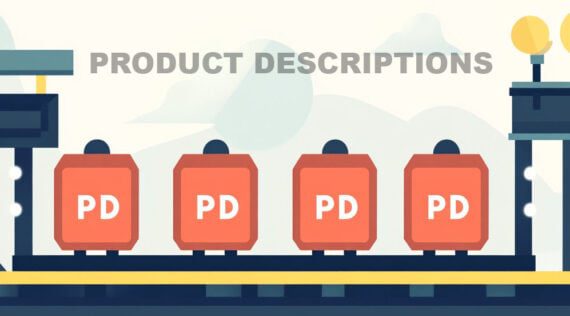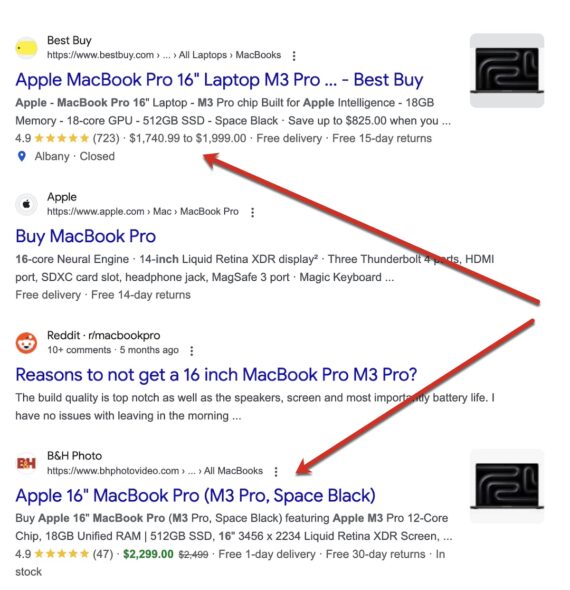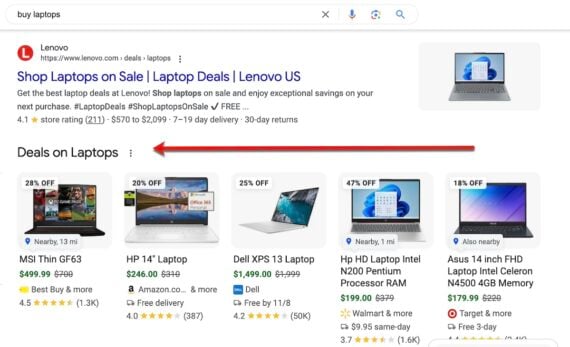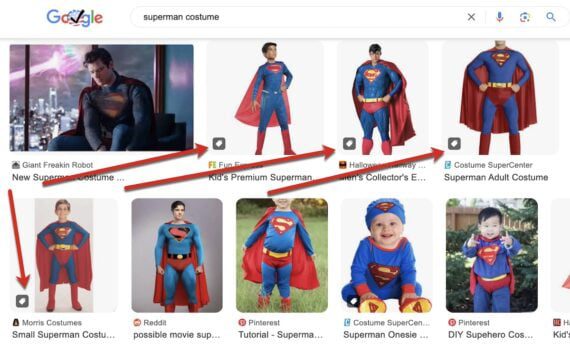AI Prompts for Better Product Descriptions
Product descriptions have always been a vital ecommerce selling tool. But crafting unique and persuasive copy is challenging.
So almost a decade ago, I wrote what has become one of my favorite articles, “How to ‘Manufacture’ Product Descriptions for Ecommerce.” The piece describes a composition process and, ultimately, produces this description for a soup spoon:
Hungry for some hearty chicken noodle or creamy clam chowder? This soup spoon has a large bowl meant to haul bisques and broths to your mouth. In fact, this soup spoon can hold about three times as much soupy goodness as your standard table spoon. You could take three times as many bites, or you could buy this soup spoon and slurp large.
Descriptions at Scale
I had been struggling with product descriptions on the website of my employer, a regional brick-and-click farm-and-ranch retailer. We had thousands of items needing descriptions for our ecommerce site. I tried three options: Amazon’s Mechanical Turk, a Romanian product description agency, and a template-based tool.

Artificial intelligence has made it easy to produce product descriptions in a mechanical or algorithmic way, almost like manufacturing.
Writers hired via the Turk or in Romania tended to approach each description like a novel with a plot. Some descriptions were excellent, but not all. The bad ones missed the point.
I then devised the product description “manufacturing” process.
- Focus on a single thing. The item’s top feature or competitive advantage.
- Connect to a benefit. Explain how the feature helps the shopper.
- Clarify and specify. Make the feature-and-benefit bridge precise and understandable.
- Test your words. Remove redundancy, add action verbs, and spark interest.
- Spell and grammar check. Sloppy text erodes trust and harms conversions.
- Add an introduction. Polish, humanize, and insert a hook.
- Add a call to action. Encourage the sale.
The process was a framework for writers and marketing teams.
Mad Libs
Unfortunately, the process took a lot of time. So we doubled down on a tactic that I likened to playing “Mad Libs” — a template-based word game — and wrote another article, “Generate Product Descriptions with Natural Language Software.”
Natural language templates were forerunners to today’s generative artificial intelligence platforms. The templates used product-category variables to mass-produce copy.
A template for LED televisions might look like this:
{{ “Experience” || “Enjoy” || “Imagine” }} {{ screen size >= 55 ? {{“cinema-like” || “theater-style”}} “viewing”: “the shows and movies you love: }} from the comfort of your {{“living room” || “home”}} with this {{ screen size }} {{ brand }} {{ screen type }} television.
That example came from Best Buy:
Experience cinema-like viewing from the comfort of your living room with this 55-inch Insignia LED television. It displays Blu-ray and high-definition movies in full 1080p resolution with stunning HD detail. Use the three HDMI inputs to create a home theater experience with this Insignia LED TV and your other audio and video devices.
Generative AI
I’ve used the “manufacturing” and natural-language processes on dozens of ecommerce sites.
But generative AI makes the task easier with better results — morphing from templates and natural language into prompt engineering.
Start with Google’s five-step prompt engineering framework: Task, Context, References, Evaluate, and Iterate.
Task
Instruct the AI on what to do. Here the aim is to produce a product description focusing on a single feature.
First, produce a template-like prompt:
Compose a compelling product description for [Product Name], focusing on the [Detailed Key Feature]. Describe how the [Short Key Feature] benefits customers, providing specific examples and comparisons.
The variables could be:
- [Product Name] – “a soup spoon.”
- [Detailed Key Feature] – “large spoon bowl that holds soup.”
- [Short Key Feature] – “large bowl.”
The prompt addresses two elements of my original manufacturing process: “focus on a single thing” and “connect to a benefit.”
Context
Generative AI is better with context. So to engineer our prompt, we once again “connect to a benefit” while adding the “clarify and specify” step to include our target customer.
Imagine you are an experienced copywriter working on product descriptions. Compose a compelling product description for [Product Name], focusing on the [Detailed Key Feature]. Describe how the [Short Key Feature] benefits customers, for example, [Benefit Bridge], providing specific examples and comparisons.
Include a direct address call to action, too. Note [Product Name] is for [Target Audience]. Use a [Brand Voice] tone. Ensure the description is engaging, grammatically correct, and avoids repetition. Use a varied, relevant, and meaningful vocabulary.
Our variables could be:
- [Benefit Bridge] – “so customers get more soup with each bite.”
- [Target Audience] – “anyone who likes soups and doesn’t want to take tiny bites.”
- [Brand Voice] – “casual and fun.”
I’ve integrated three steps from the original process: “test your words,” “spell and grammar check,” and “add a call-to-action.”
References
Next, we can provide the AI with examples of successful, category-specific product descriptions.
The product description may be similar in style to these examples:
“[First Example]”
“[Optional Second Example]”
Craft three excellent product descriptions.
Filling in the example variables, we have a completed prompt.
Imagine you are an experienced copywriter working on product descriptions.
Compose a compelling product description for a soup spoon, focusing on the large bowl or head that allows it to hold soup. Describe how the large bowl benefits customers — such as “get more soup with each bite” — while providing examples and comparisons.
Include a direct call to action.
Note that a soup spoon is for anyone who likes soups and doesn’t want to take tiny bites. When you write, use a casual and fun tone. Ensure the description is engaging, grammatically correct, and avoids repetition. Use a varied, relevant, and meaningful vocabulary.
The product description may be similar in style to this example:
Hungry for some hearty chicken noodle or creamy clam chowder? This soup spoon has a large bowl meant to haul bisques and broths to your mouth. In fact, this soup spoon can hold about three times as much soupy goodness as your standard table spoon. You could take three times as many bites, or you could buy this soup spoon and slurp large.
Craft three excellent product descriptions.
Evaluate
Even the best AI prompts will not always produce the desired results, so evaluate the output. The example prompt generated this response from ChatGPT 4o.
Tired of chasing soup around your bowl with a tiny spoon? Meet the soup spoon designed for real soup lovers. Its generous, deep bowl lets you scoop up rich, velvety bisques, hearty stews, and soul-warming broths in satisfying mouthfuls — no more dainty sips. Compared to your average tablespoon, this bad boy holds nearly three times as much, so you can enjoy more flavor with every bite. Whether you’re slurping ramen or savoring homemade chicken noodles, this spoon gets the job done. Go big or go hungry — grab yours today.
Iterate
The final step in Google’s prompt engineering framework is to iterate or repeat the process with minor changes until you get the right response.
Product descriptions have never been more critical for ecommerce success. How we produce and test them reflects their importance.




